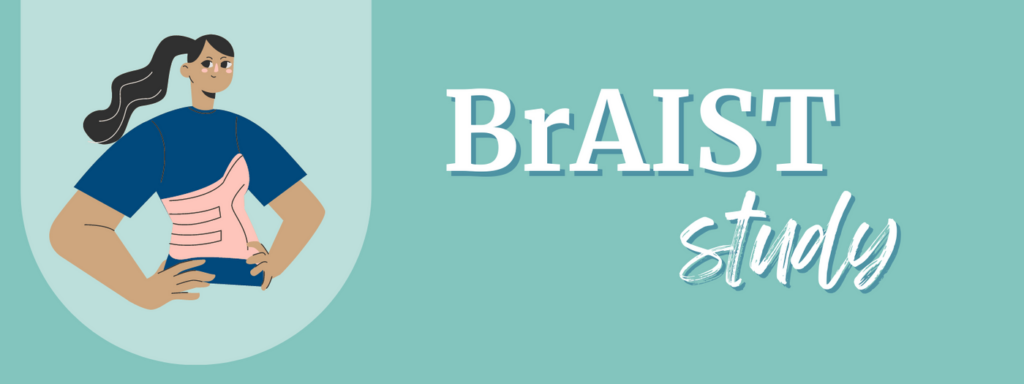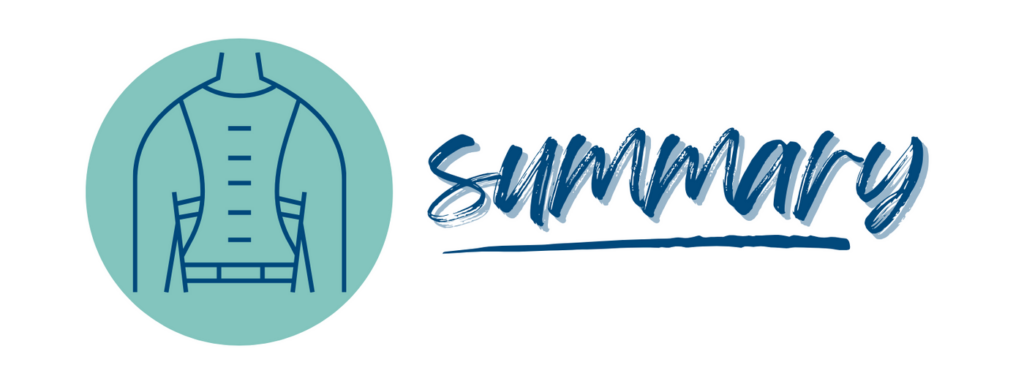
Bracing is a common treatment for scoliosis, especially for those with adolescents idiopathic scoliosis, (AIS). AIS is scoliosis in adolescents with no known cause of the condition. Bracing treatment for adolescents with scoliosis can help prevent further progression of the curve, and it is typically recommended for patients with curves between 25 and 45 degrees who are still growing.
However, in the past, there has been debate about how many hours per day the brace should be worn. The Bracing in Adolescent Idiopathic Scoliosis Trial (BrAIST) was a research study that looked at the effectiveness of back braces for treating scoliosis. The study, overseen by Dr. Stuart Weinstein, was published in 2013 and followed a group of adolescents with scoliosis who were assigned to either wear a back brace or receive no other treatment. The study aimed to determine if wearing a brace was worth the effort and the optimal number of hours per day that patients with adolescent idiopathic scoliosis should wear a brace.
The study took place between 2007 and 2013 and it involved over 200 patients between the ages of 10 and 15 with adolescent idiopathic scoliosis and a Cobb angle of 20 to 40 degrees. The participants were randomly assigned to one of two groups: one group wore a brace for 18 hours a day, while the other group wore a brace and received no treatment. The bracing group was assigned to wear a brace 18 hours per day (a typical bracing prescription). A special monitor was embedded in the brace to keep track of how long it was used per day. Patients in the observation-only group received no additional treatment. The endpoint of the study was “treatment failure” defined as the progression of scoliosis to 50 degrees or “treatment success” when skeletal maturity was reached without progression to 50 degrees.

The results of the study showed that the number of hours that a brace is worn each day has a significant effect on the progression of scoliosis. Participants who wore the brace for at least 18 hours per day had a significantly lower chance of needing surgery to correct their scoliosis than those who wore the brace for less than 18 hours per day or those in the observation group.
Interestingly, the study also found that wearing the brace for more than 18 hours per day did not provide any additional benefit. This means that wearing a brace for the recommended amount of time is crucial for its effectiveness in treating scoliosis, but wearing it for longer than necessary may not provide any additional benefit.
The reason why wearing a brace for a significant portion of the day is so important is that it helps to correct the curvature of the spine by applying pressure to the affected areas. This pressure can hold the curve in place and can prevent the curve from getting worse, and may even help to gradually reduce the degree of curvature over time.

In summary, the BRAIST study found that wearing a brace for at least 18 hours per day is an effective way to treat adolescent idiopathic scoliosis and prevent the need for surgery. The study also showed that wearing a brace for more than 18 hours per day does not provide any additional benefit.
It’s worth noting that the BRAIST study actually ended early because the results were so conclusive. The researchers felt that it was unethical to continue assigning participants to the no-treatment group since it was clear that wearing a brace was the more effective option.
Overall, the BRAIST study provides important insight into the best practices for treating scoliosis with a back brace. If you or a loved one has been diagnosed with scoliosis, it’s important to talk to your doctor about the best treatment options for your specific case. Wearing a brace for the recommended amount of time can be an effective way to correct the curvature of the spine and prevent the need for surgery in the future.